Meet The Editors Of Tom's Hardware (And Their Technology)
What Hardware Does Tom's Hardware Use?
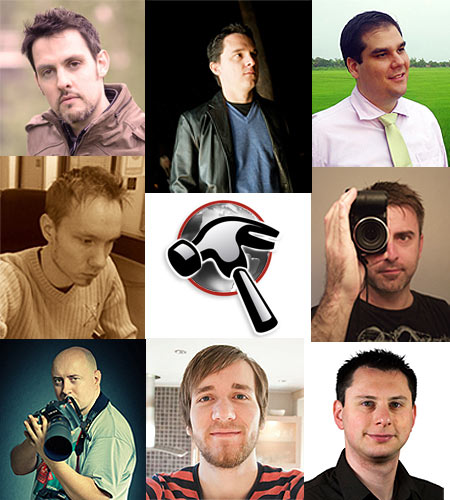
Roughly one year ago, during an editorial meeting between the heads of our U.S., German, French, and Italian offices, we decided it'd be fun to share a bit about the technology we all used around our offices. The more we discussed, the more we realized that our readers might be surprised to learn that testing and writing about the latest and greatest doesn't always mean getting to use the best hardware on a daily basis.
We invite you to learn more about some of the Tom's Hardware editors you already know, and others around the globe that you might not recognize. We don't have room to include everyone, but let's have a look at the desktops, networks, and mobile devices from one representative in each country!
U.S.: Chris Angelini's Bio
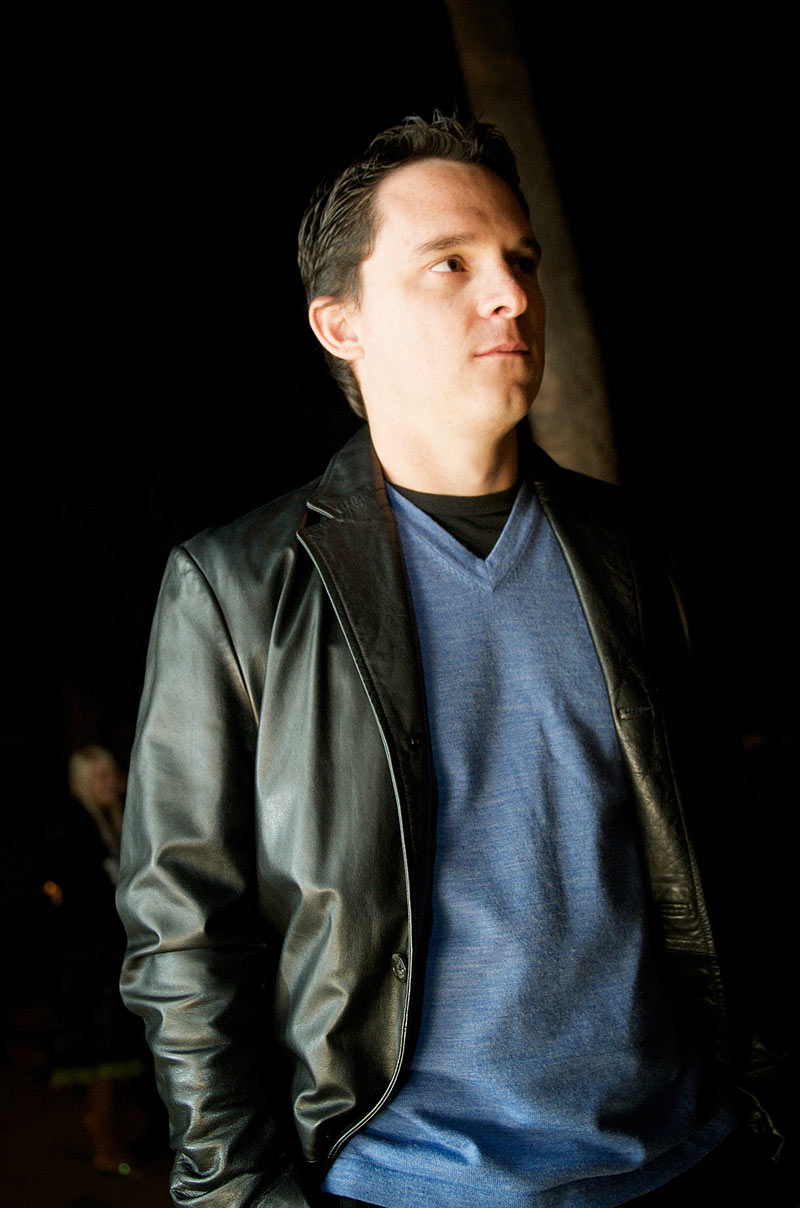
My name is Chris Angelini, and I’m the worldwide editor-in-chief for Tom’s Hardware.
In addition to writing much of the launch coverage you read on Tom’s, I also edit every single word of every single feature story that goes live on the U.S. site (a majority of my day), coordinate assignments for the U.S. team, arrange translations from German and French (plus Italian soon) into English, and distribute English content to our sites in Germany, France, Italy, Russia, Denmark, Norway, and Finland. Of course, that's after answering the hundreds of email messages from vendors and readers presenting new story ideas and asking questions about existing pieces, which I'm more than happy to do.
Despite a schedule (and a two-year-old son) that boots me out of bed at 7 or 8 AM and me going all-out until 2 or 3 AM most days, I enjoy testing and writing about the latest PC hardware, and working with a team of full-time/freelance writers who also love evaluating technology for the sole purpose of guiding your purchasing decisions.
You can reach me via email (chris dot angelini at tomshardware dot com) or on Twitter, where I often ask for reader feedback on upcoming stories, post pictures, or recruit help for the site.
U.S.: Chris Angelini's Desktop
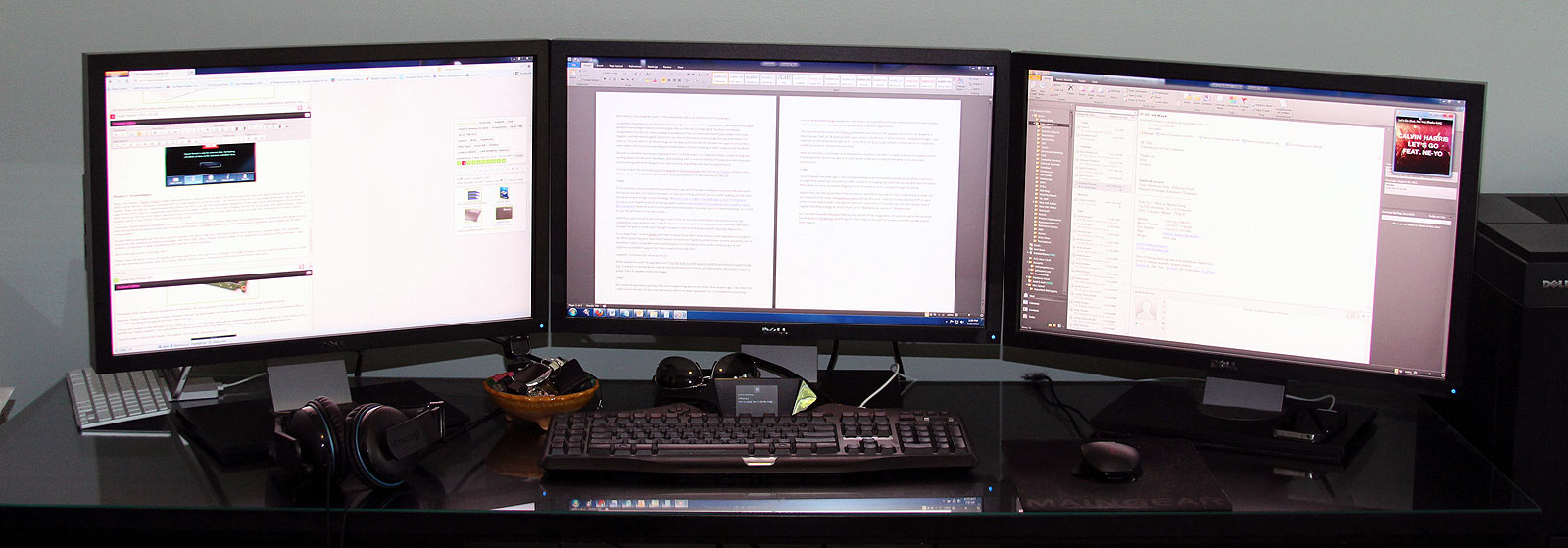
It’s a common misconception that, just because I get all of the latest hardware, my own machine must be top-of-the-line. The fact of the matter is that all of the good stuff sits on a shelf, waiting for the next hurried preview of high-end technology, like Intel Core i7-3960X (Sandy Bridge-E) And X79 Platform Preview, or in-depth analysis of graphics cards, such as what you saw in Battlefield 3 Performance: 30+ Graphics Cards, Benchmarked. Nobody wants to pull apart their workstation to poach parts for benchmarking. So, I tend to use the leftovers in my own builds.
Stay On the Cutting Edge: Get the Tom's Hardware Newsletter
Get Tom's Hardware's best news and in-depth reviews, straight to your inbox.
With that said, I’m currently running a Core i7-975 in my main workstation that only just recently replaced an overclocked Core i7-920 from several years back. Twelve gigabytes of memory have been enough for quite a while, even though I suspect I have a module going bad, requiring a little diagnostic work.
For a long time, I used a Quadro NVS 440 to drive three Dell U2410 displays, but upgraded to a Radeon HD 6870 once it became clear that I had an extra one on-hand. Persistent blue-screens caused by one of the driver’s DLLs compelled me to switch back over to Nvidia as soon as the company got its act together and added support for three screens from one GPU.
Logitech’s G19 and G9x serve as my I/O.
What makes me want to upgrade most? The fact that my Asus X58-based motherboard doesn’t support USB 3.0. Transfers to thumb drives take an inordinate amount of time, which is doubly-obnoxious since I’m using USB 3.0-capable external storage.
U.S.: Chris Angelini's Network
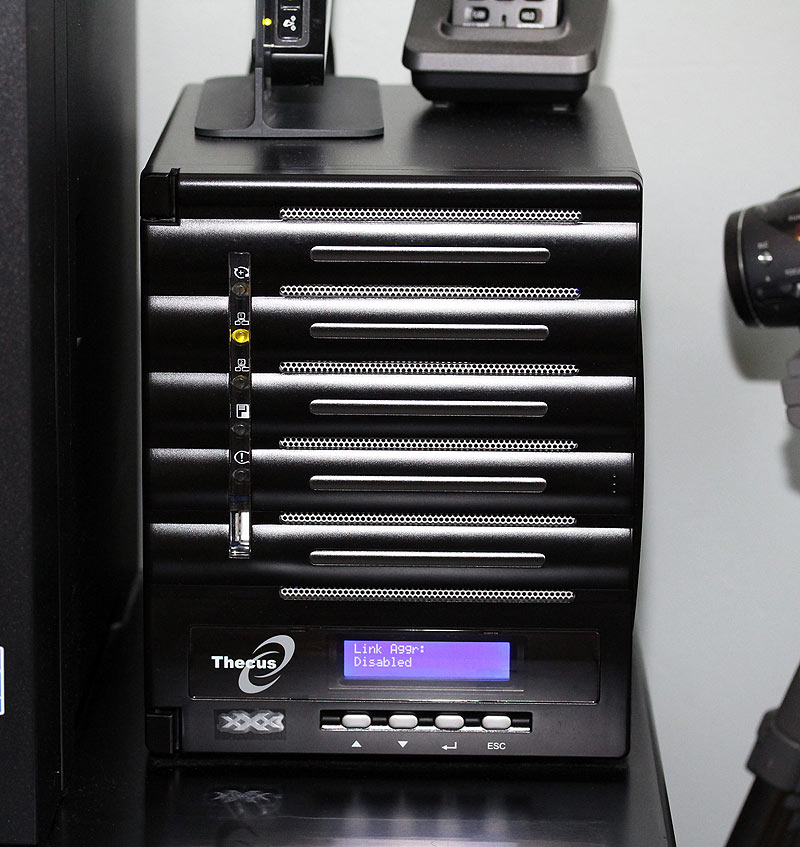
My networking setup is perhaps the most unique thing about my office. Several years ago, I decided that I didn’t want the loss of any one machine to affect my daily operation. So, I consolidated everything onto a networked storage appliance. Over time, I’ve used different external boxes, but the idea remains constant: lean on redundant SATA-based drives to protect against mechanical failure.
The current setup consists of a Thecus N5200XXX with five 1.5 TB Seagate hard drives. Arranged in a RAID 5 array, that’s 6 TB of accessible space, which I divide into 3 TB for network-attached storage—any machine on the network can get to it—and 3 TB as an iSCSI target, which is where all of my machine’s email, documents, and pictures are kept.
With benchmarks, workloads, and shared video media on the NAS, I’m able to keep information where the people who need it can get to it most easily, while preserving the integrity of my personal workstation.
U.S.: Chris Angelini's Mobility
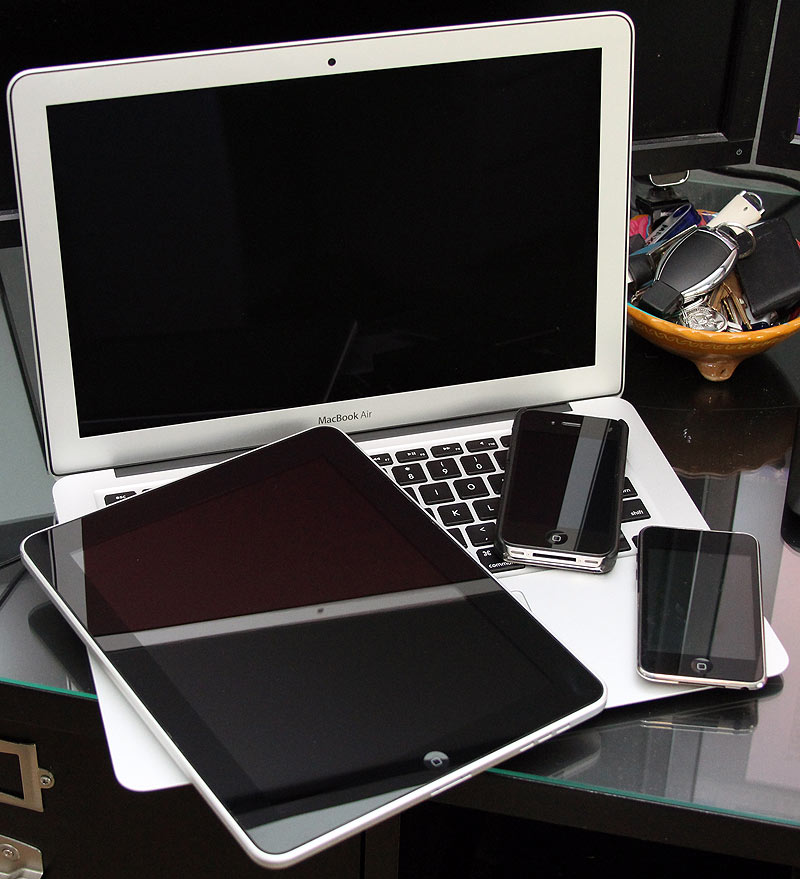
Up until about two years ago, I was complacently ignorant of mobility outside of my office. I feel very strongly that, when I go out with my wife, or when I’m hanging out with friends, my attention should be theirs, and not on a constantly-dinging stream of emails or texts coming through my phone.
Apparently, my wife appreciated that sentiment, but felt it was time for me to be more accessible. So, she replaced a five-year-old Audiovox junker with an iPhone 4. I still try to keep it turned off or silent when I’m out with people I care about. However, since then, I’ve picked up a lot more Apple-based regalia, including an iPad, an iPod Touch, an 11” MacBook Air, and a 13” MacBook Air. In the image above, the 11” Air is notably missing—it’s en route from a hotel in Napa, where I left it after a weekend of wine tasting. Whoops!
Do I consider myself a Mac guy? Not by any stretch of the imagination. It’s just that all of the Android-based devices, Ultrabooks, and PCs go to other folks on my staff for review, and then usually back to their makers.
Canada: Don Woligroski's Bio
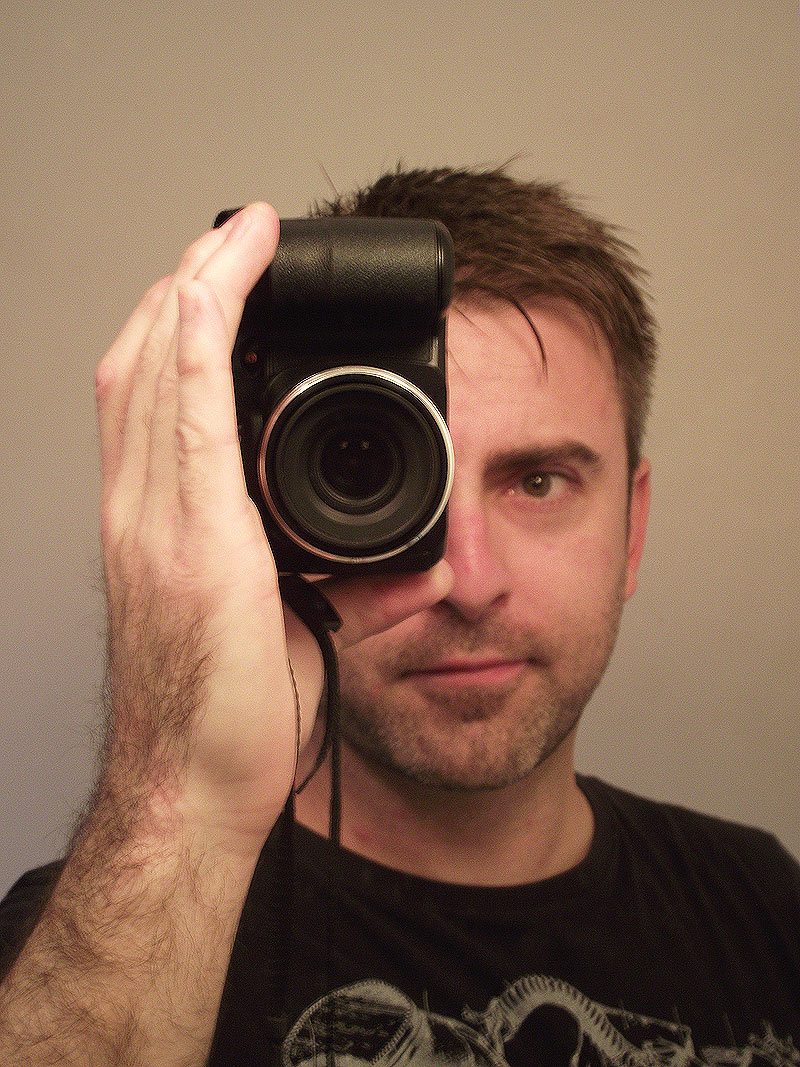
I'm Don Woligroski, senior editor for Tom's Hardware U.S., although I live and work in my native country of Canada.
My primary focus is graphics cards, CPUs, and related hardware. In addition to my regular product reviews, I write the monthly Best Graphics Cards and Best Gaming CPUs for the money articles. I like to mix things up with the eclectic whenever I get the chance: I've worked on articles where I designed a PC case and even reviewed an RC helicopter. I also cover game performance analysis, and I'm a big proponent for stereoscopic 3D. I was the first North American correspondent to review Blu-ray 3D on the PC.
When it comes to PCs I consider myself a jack of all trades. My love for technology started as a child, and although I worked on Apples in grade school, the first computer I ever owned was a Commodore Vic 20 on which I taught myself Basic and some old-school machine language (Commodore, for the win). My professional background is in media. I've produced a lot of video and constructed a lot of websites in my career. I'm a passable digital artist. I used to be a decent 3ds Max modeller, but those skills have dulled over time (although I'm still handy with Photoshop).
Being a hardware reviewer means a demanding schedule, but I make time for my lovely wife and three children, and I try to keep in shape with martial arts. I consider myself a sci-fi fan and a gamer, with Star Trek and Half-Life as my favorite franchises. Unfortunately, the amount of time I have for those forms of entertainment has dwindled. Speaking of Star Trek, at the turn of the millennium, I designed and modeled some of the ships in Interplay's Starfleet Command: Orion Pirates PC game. I almost moved to Boston to follow a career in the games industry, but fate had other plans and here I am today.
If you have a story idea or would like to ask a question, know that I enjoy communicating with our readers. The address is don dot woligroski at tomshardware dot com).
Canada: Don Woligroski's Desktop
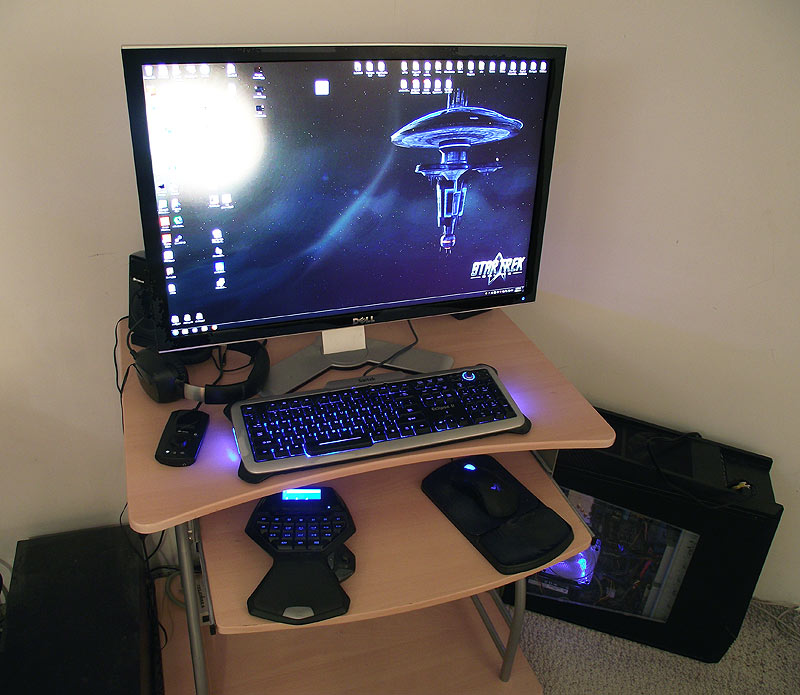
Like many other hardware reviewers, my personal rig is made up of leftovers from previously-tested samples. My main rig sports a Core i7-920 with 12 GB of Kingston RAM on a Gigabyte X58A-UD3R motherboard. Until very recently, I only used a single 500 GB hard disk (I don't need a lot of capacity, since all of my work lives on a server), but I just added a 64 GB Corsair Force 3 SSD because my old Windows installation was getting sluggish. I'm very happy with the responsiveness that comes from adding an SSD. It all sits in an understated NZXT Tempest enclosure.
As a graphics card enthusiast, I tend to swap out GPUs frequently. I'm currently using MSI's GeForce GTX 680 Lightning, and prior to that I was running Sapphire's HD 7970 OC. I'm not a big multi-display fan, and I prefer one big screen over several smaller ones. So, I'm using a 30" Dell display. My keyboard is a Saitek Eclipse II (the second one I've owned), my gameboard is a Logitech G13 (that replaced a dying Nostromo SpeedPad n52), and my mouse is a Razer Deathadder (also the second I've owned). Audio is handled by Corsair's SP2500 2.1 system, and I use Creative's Sound Blaster Tactic 3D Sigma when the kids are sleeping.
I can't imagine when I'll feel the need to upgrade my current configuration; this old bird flies plenty fast for me, thanks to its modern graphics hardware.
Canada: Don Woligroski's Server And HTPC
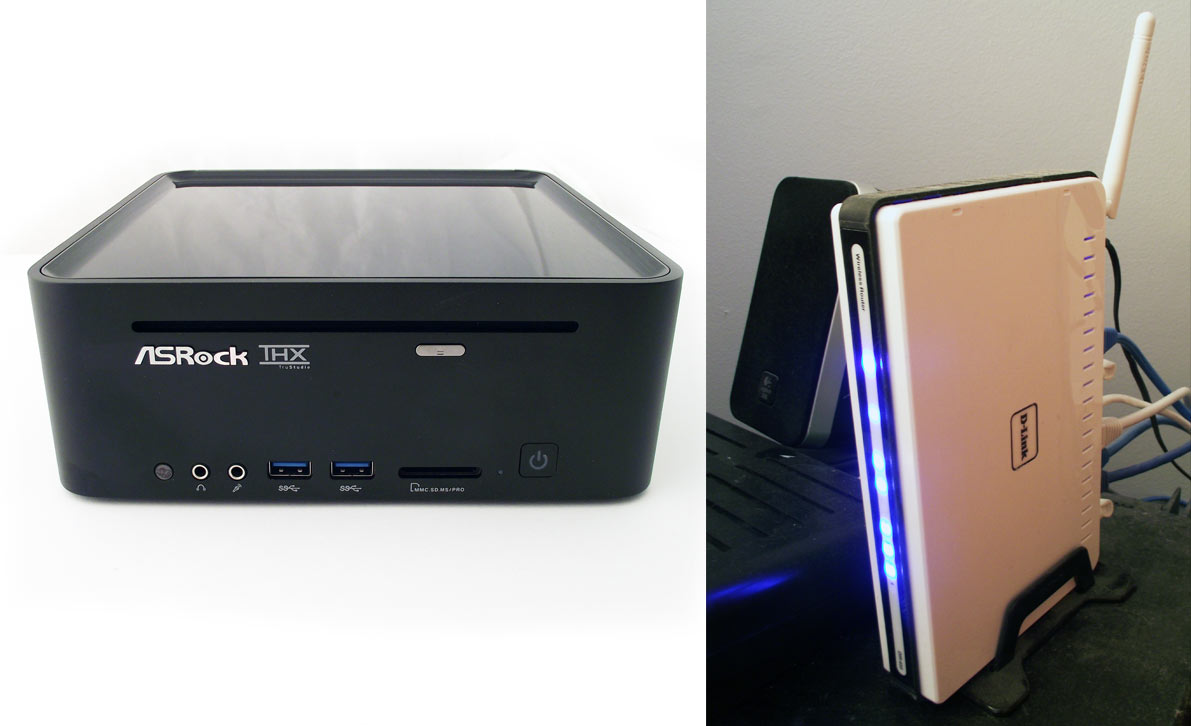
That "server" I mentioned on the previous page centers on an AMD Phenom II X6 1100T dropped into Asus' M4A78T-E motherboard with 4 GB of RAM. It used to be equipped with a Radeon HD 6870 until a recent power spike (and resulting PSU death) inspired me to install something lower-end until I can get battery backup. It's a reliable machine, but I miss the Radeon HD 6870 on the rare occasions someone comes over to game. It's armed with two Hitachi 1 TB drives that store all of my work and the media that it serves. Rather than mirroring the drives, I simply make backups to another system in the house.
I'm big on HTPCs as well. Our main television is hooked up to an ASRock Vision HT 821B (Ivy Bridge-based Core i5-3210M), and the downstairs home theater system sports an AMD Phenom II X6 1100T CPU and Zotac GeForce GTX 560 Ti 448-core. The card is more than capable of handling stereoscopic 3D at 1280x720, the native resolution of our Acer H5360 3D Vision projector. Sure, it's not a 1080p output, but Blu-ray content looks great, and games are ridiculously fun in 3D on the 100" screen.
Canada: Don Woligroski's Mobility
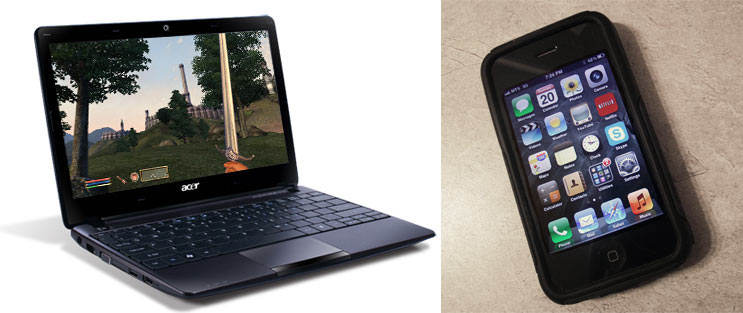
I never had a cell phone until I was in my early 30s. Then, about five years ago, I bought an HTC Touch. As a PC guy, I really hoped that Windows-based phones would flourish, but that never happened. After trying the HTC Diamond, I threw my hands up and went to Apple's iPhone. I'm still quite happy with my 3GS. There's no killer app pushing me to upgrade, but screen size is a factor for me, and it might compel me to grab an iPhone 5 when my contract runs out. Android-based alternatives look interesting, but I'm hesitant to migrate now that I've found a phone that works for me.
My other mobile hardware is all Windows-based: a C-50 powered Aspire One 522 netbook and an A10-4600M-powered laptop round out my mobile arsenal. I'm very impressed with the AMD's A10 for laptop duty. As for the nettop, performance and size are great, but the Aspire's tiny keyboard drives me nuts. I envy the convenient size of the iPad, but I'm holding off making a purchase until I see what Windows 8-powered ARM devices can do.
Denmark: Marvin Graversen's Bio

Hi, my name is Martin Graversen, and I work for Tom's Hardware Denmark, where I write daily news, reviews, and translate articles from English to Danish.
I'm 26 years old and my interest for computers started when I was a kid with access to a DOS-based PC in my dad's little company. Some of the first games I remember playing were Digger (1983) and the Danish pirate game KaptajnKaper (1981). I later got hooked on titles like Prince of Persia (1989), Wolfenstein 3D (1992), Day of the Tentacle (1993), and Warlords II (1993).
My father wasn't happy with me playing on his extremely expensive machines, so he bought me and my siblings a brand new system in 2000. It had a Pentium III 800 MHz processor and a Matrox Millenium G200/G400 graphics card. It took a couple of years before I got a proper Internet connection, but I got into competitive gaming shortly after, and I became a regular attendee at private and public LAN events.
The only console games that have meaning for me are Super Mario Bros. 3 on SNES and Tekken 3 on the original PlayStation. I'm not really into single-player games, but I love competitive e-sport games like Quake 3/Live and DOTA 2. I have been playing on different Counter-Strike version 1.6 teams since 2001.
Denmark: Marvin Graversen's Desktop
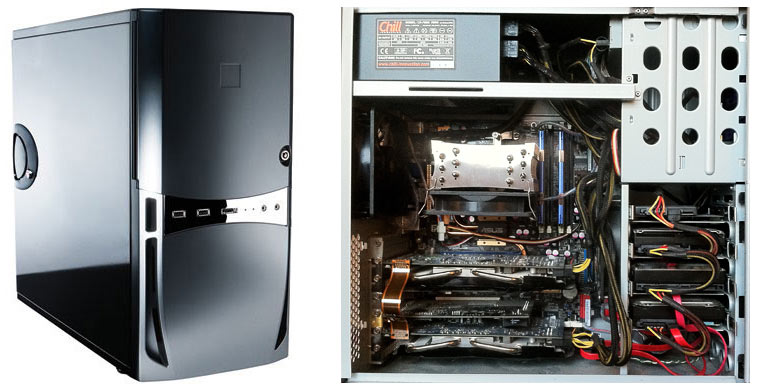
My desktop PC is powered by AMD's Phenom II X4 920 on an Asus M3N-HT Deluxe motherboard with 4 GB of RAM. I use an OCZ Vertex 2 180 GB SSD as a system drive, and I have three conventional 2 TB disks totaling 6 TB. The graphics subsystem is comprised of two Gigabyte GeForce GTX 460 cards overclocked and running in SLI. My case is an Antec Sonata III 500, and it's all powered by a Chill Innovation CP-700M.
I've spent time learning about PC hardware since the tenth grade, and I've been the go-to IT in my network of friends and family ever since. The basic elements of my desktop are now 3½ years old, so I'm really looking forward to getting a new Ivy Bridge-based machine later this year. Personally, I find it strange that I'm even using a dual-card configuration; silence and stability are really more important to me than performance. So, that's what I'll be pursuing when I build my next system.
-
amuffin Uberragen21But do they know how to proof read before posting?ahahaha....AHAHAHAHAHAAH!!!!Reply -
army_ant7 I think I'm turning gay! :lol: But seriously, I admire these guys! Chris and Don, many thanks! You have my great appreciation and a lot of the members here at TH shouldn't take you guys for granted. Looking forward to more cool reviews!Reply
I'd also like to thank every other editor (or anyone who contributes to the articles) whether they're listed in this pic article or not! LONG LIVE TOM'S HARDWARE!
(BTW, for some odd reason, I thought you were German, Don. Sorry about that. :p) -
cangelini Uberragen21But do they know how to proof read before posting?I challenge you to track down errors in our feature content. I spend all day most days proofreading ;-)Reply -
cangelini army_ant7I think I'm turning gay! But seriously, I admire these guys! Chris and Don, many thanks! You have my great appreciation and a lot of the members here at TH shouldn't take you guys for granted. Looking forward to more cool reviews!I'd also like to thank every other editor (or anyone who contributes to the articles) whether they're listed in this pic article or not! LONG LIVE TOM'S HARDWARE!(BTW, for some odd reason, I thought you were German, Don. Sorry about that. )I'm sincerely glad you enjoy the work we do. :)Reply -
dudewitbow majudhuno doubt about apple marketing hereReply
I would think the editors needed something thin and light to carry around. before the advent of ultrabooks and sleekbooks, there arent many choices for extremely thin strong laptops(disregarding cost as a factor). Albeit I was never a fan of apple pricing, their engineers are really good at making the laptops thin and efficient heat wise. The thin counterpart to a macbook on windows would be the razor blade, but that thing is even more expensive than a mac. It also doesn't hurt to use a unix based operating system as a mobile unit. -
mayankleoboy1 Great read! Been waiting for an article like this for a loong time.Reply
No love for Andrew Ku and Crashman ? they do ~ 50% of the articles -
cangelini Consider also that I have a Lenovo Carbon here in the lab, which is badass, aside from the touchpad, but also more expensive than an Air.Reply -
cangelini mayankleoboy1Great read! Been waiting for an article like this for a loong time.No love for Andrew Ku and Crashman ? they do ~ 50% of the articlesThose two are camera-shy. If folks like this one, though, we have a ton more editorial guys around the world. We just have to trick them into participating.Reply